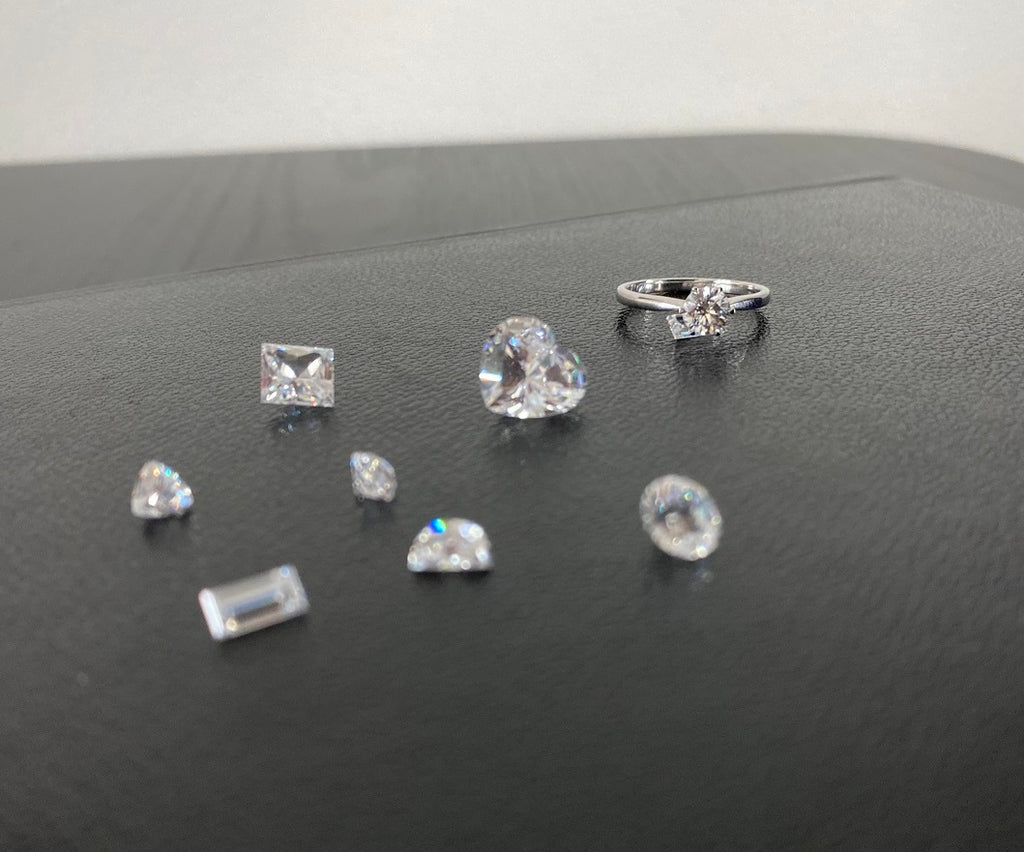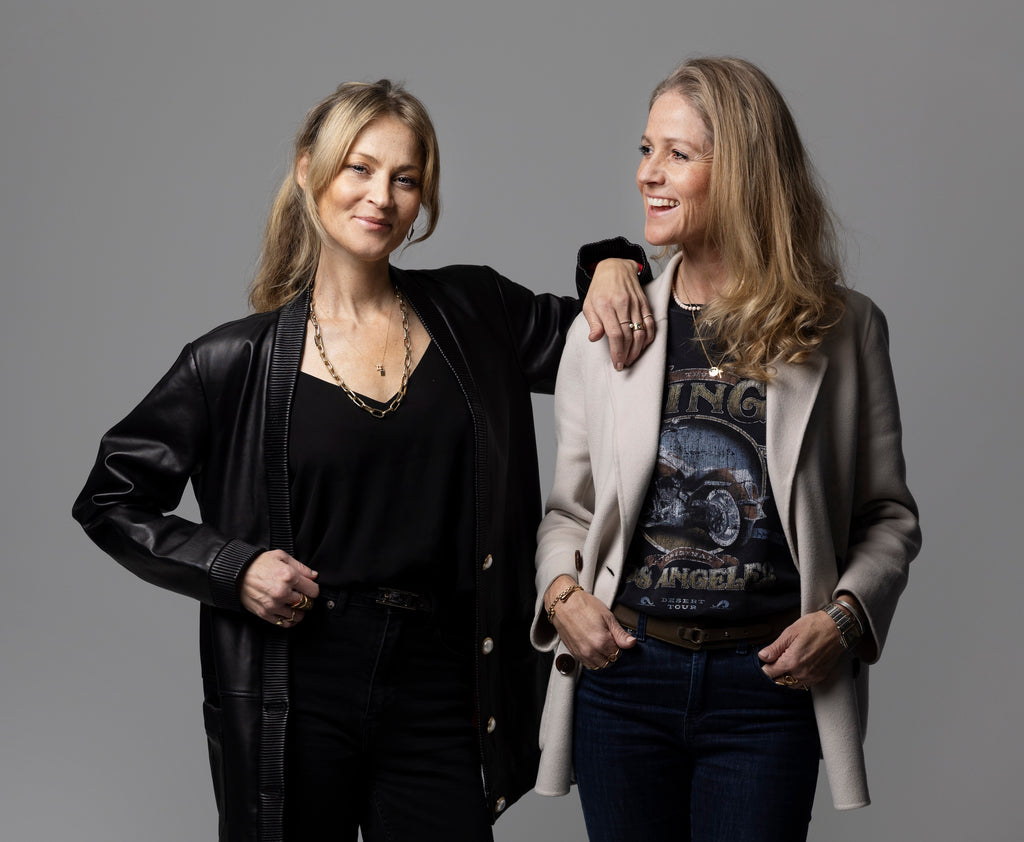< Back to diamond buying guide
Diamond Clarity
Diamond Clarity is one of the 4 Cs of diamond quality grading. The 4 Cs stand for Colour, Clarity, Cut, and Carat Weight which are evaluated together to determine a diamond's beauty and value. Diamond Clarity refers to the absence of inclusions and flaws. Clarity is important because inclusions affect the diamond's sparkle. Read on to understand what Diamond Clarity means and how it is graded.


What does 'Diamond Clarity' mean?
Diamond clarity refers to the purity of the stone and the extent to which it is free from inclusions and imperfections (minor inclusions or surface blemishes on the diamond). The clarity of diamonds is affected by inclusions as well as flaws. The GIA considers inclusions as the internal characteristics of a diamond, while blemishes are its external characteristics. The fewer and smaller the inclusions and imperfections, the better the diamond quality and the higher its value.
Nearly all diamonds, natural and lab-grown diamonds alike, have inclusions. We can say that hardly any diamond is entirely free of inclusions and imperfections; finding an absolutely eye-clean and loupe-clean diamond is extremely rare. In fact, except in theory, there is no such thing as an absolutely flawless or perfect diamond.
What are "inclusions" and "imperfections" in a diamond?
In the process of formation of natural diamonds deep inside the earth from carbon, many inclusions like feathers, crystals, pinpoints and clouds are trapped within the diamond. Lab-created diamonds are grown in a molten metal solution and as a result, they have metallic inclusions which can usually only be identified with 10x magnification. Further, while some inclusions are visible only under magnification, they are more evident in certain diamond cuts and shapes, such as the rectangular step cuts and emerald cuts. Inclusions and flaws reduce a diamond's brilliance.

What are the different types of inclusions?
The most common of these diamond inclusions are:
Cloud: In terms of clarity, a cloud is a collection of very tiny pinpoints within diamonds that can reduce its brilliance. When there is more than one cloud in the stone, it is called a "cloudy diamond".
Cavity: A cavity is a pocket inside the diamond. It may be colourless, but if there are coloured crystal inclusions, they could be visible to the naked eye or under magnification. Such a stone appears duller and lacks the brilliance we associate with diamonds.
Graining: This inclusion occurs when there is irregular crystal development in the diamond. Graining appears as white or coloured lines that make the diamond look hazy.
Feather: These types of inclusions are tiny fractures within diamonds that may reflect white light from some angles.

The diamond's clarity grade
A diamond appears eye-clear to an unaided eye but under magnification, impurities within and imperfections outside become very obvious. All diamonds are examined under high magnification and graded for clarity by a skilled grader. The Gemological Institute of America (GIA) diamond clarity scale is the most widely used clarity grading system, followed by the diamond industry and jewellers across the globe.
What is the diamond clarity scale?
Most of the diamond's inclusions and blemishes are not visible to the unaided eye. To grade diamonds, a trained grader uses a clarity scale to check for internal inclusions and external blemishes, which are called clarity characteristics. Different diamond labs have slightly varying scales. The most used diamond clarity scale worldwide is the GIA report which ranges from Flawless (F) to Included (I). Another widely accepted scale is from the American Gem Society (AGS).
Diamond experts at the GIA rate Flawless as the best diamond clarity grade on the clarity chart. There are no internal or external imperfections visible in Flawless diamonds (F), either visible to the naked eye or under 10x magnification.
In Internally Flawless Diamonds (IF), no inclusions are visible to the naked eye, even under 10x magnification. However, they will have external imperfections or blemishes. An Internally Flawless diamond would carry a lesser price tag than a Flawless stone.
Very Very Slightly Included diamonds (VVS1, VVS2) are stones without noticeable inclusions, but there may be slight inclusions that are difficult, but not impossible, to see under 10x magnification. A VVS diamond has more inclusions than an IF but fewer inclusions than an SI.
So, if you look at two diamonds of the same carat weight, colour and cut grade, the one marked VVS1 is superior to the SI2 one.
VS1 and VS2 diamonds are Very Slightly Included stones. This means there are very small inclusions visible that can be seen under magnification but are treated as "minor".
In Slightly Included Diamonds, there are tiny inclusions that can easily be seen with the naked eye.
These are heavily included diamonds with many imperfections and visible inclusions that are obvious to the naked eye.
Diamond Clarity Grades and what they mean
| GIA Clarity Grade | Meaning | AGS Clarity Grade |
| Flawless (F) | There are no visible inclusions or blemishes under 10x magnification. |
0 (F) |
| Internally Flawless (IF) | No blemishes visible to the naked eye or under 10x magnification |
0 (IF) |
| Very Very Slightly Included (VVS1 and VVS 2) |
Stones with inclusions that are difficult, but not impossible, to see under 10x magnification. |
1 (VVS1) 2 (VVS2) |
| Very Slightly Included (VS1 and VS2) |
Stones with inclusions that can be seen under magnification but are treated as "minor". |
3 (VS1) 4 (VS2) |
| Slightly Included (SI1 and SI2) |
Stones with inclusions that can be seen under magnification. |
5 (SI1) 6 (SI2) 7 (Overlaps between SI2 & I1) |
| Included (I1, I2, I3) | There are many imperfections in the gemstone when viewed under magnification |
8 (I 1) 9 (I 2) 10 (I 3) |
How important is a diamond’s clarity grading?
Clarity affects how a diamond shines and appears when illuminated. Fewer inclusions mean the diamond will shine more brilliantly. When determining the optimum clarity for a diamond, keep in mind that no diamond is entirely pure. However, the closer it gets to purity, the clearer it becomes and is awarded higher clarity grades.
Diamond clarity is important when choosing a diamond’s shape and size for jewelry. In step-cut shapes, such as emerald cut and Asscher cut diamonds, the shallow pavilion and open table will accentuate the clarity of the stone, making blemishes more obvious. Similarly, in larger carat sizes, flaws can be more noticeable due to larger facets.
A diamond's clarity grade determines price. A stone with a higher grade on the diamond clarity chart would be more expensive than a similar one with a lesser clarity grade. So, if you look at two diamonds—say a VVS1 and an SI1—of the same carat weight, colour and cut grade, the VVS1 stone would be considered superior and more costly than the SI1 stone.


Looking for diamond engagement rings online?
A proposal and an engagement are high points in anyone's life. Almost always, an engagement ring is set with diamonds, and the couple gives this purchase much consideration. If you, too, are looking for a diamond engagement ring, we invite you to browse our fabulous selection of unique handcrafted engagement rings created by some of the world's finest designers and brands. For the eco-conscious buyer, there is a fine selection of jewelry that's slow-made, ethically sourced and also lab-grown diamond rings.
When it comes to buying diamonds, we recommend that you choose the best quality your budget can accommodate. Speaking only about clarity here, we urge you to choose diamonds of a higher clarity grade. You will never regret your purchase, and a sparkling diamond of high clarity will only bring you joy over the years.
If you need personal guidance, you can always reach out
Have no worries when you shop online for diamond jewelry at The Jewellery Room. Every day we have the honour of helping customers from all over the world. Our jewelry experts will do whatever it takes to find the perfect fit and size for the jewelry you're looking for. And please remember if you are still in doubt, you can shop safely with us.
We guarantee you can always exchange your purchase within 30 days.
Love, Charlotte & Pernille

